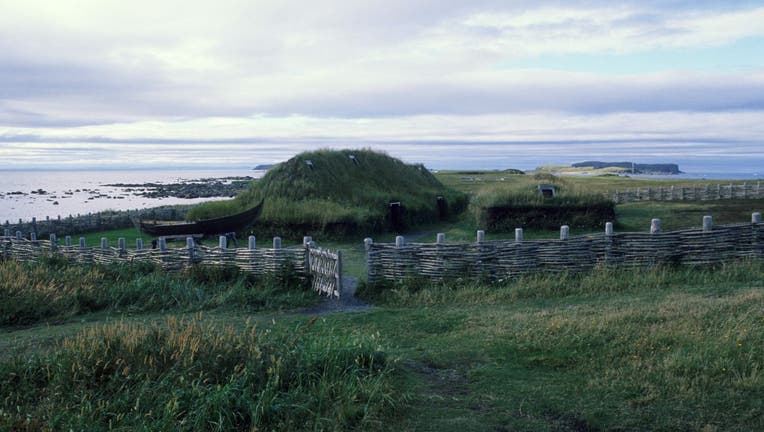Vikings were in North America in 1021, researchers say

Canada, Newfoundland, L'anse Aux Meadows Nhp, Replicas Of Norse Sod Houses From 1000 Years Ago, Fence. (Photo by Wolfgang Kaehler/LightRocket via Getty Images)
NEW YORK - Vikings from Greenland beat Christopher Columbus to the shores of North America by over four centuries, according to new research published Wednesday.
Researchers have known that Vikings built a village at L’Anse aux Meadows in Newfoundland, Canada long before Columbus' voyage, but a new study published in Nature actually pinpoints the date of their arrival.
According to the study, the Vikings cut down three trees in the year 1021 in order to build a village and repair their ships. This would mean the Vikings reached North America some 470 years before Christopher Columbus did.
Researchers analyzed transversal and radial sections of wood for tree-ring samples, which indicated a spike in a naturally radioactive form of carbon detected in ancient pieces of wood from the site.
Get breaking news alerts in the free FOX5NY News app | Sign up for FOX 5 email newsletters
This became the scientific key to the exact date that the Norse were.
"This date offers a secure juncture for late Viking chronology," the study authors continued. "Together with other cosmic-ray events, this distinctive feature will allow for the exact dating of many other archaeological and environmental contexts."
It’s uncertain whether the 1021 date is near the beginning or end of the Viking occupation, but further research of other wood samples could help identify more dates.
Carbon dating is a method that provides objective age estimates for carbon-based materials that originated from living organisms. Researchers use data from tree rings, sediment layers, and other samples to calibrate the carbon dating process.
The latest study also overcome the imprecision of previous age estimates by making use of the cosmic-ray-induced upsurge in atmospheric radiocarbon concentrations.

